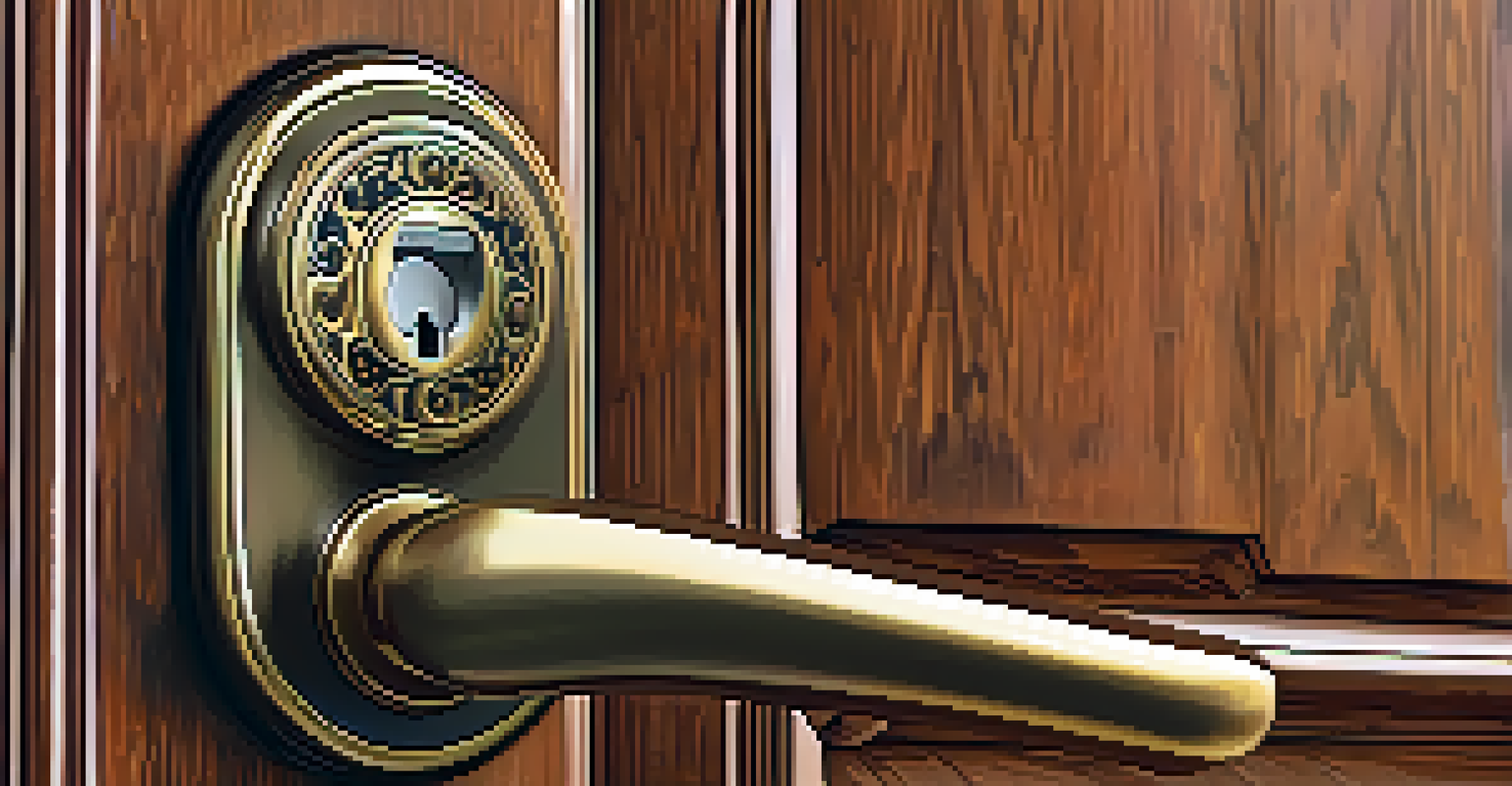Cybersecurity Measures for Smart Luxury Homes

Understanding Smart Luxury Homes and Their Vulnerabilities
Smart luxury homes integrate advanced technology, from automated lighting to sophisticated security systems. While these innovations enhance convenience and comfort, they can also introduce unique vulnerabilities. For instance, a smart lock that can be controlled via an app might be susceptible to hacking if not properly secured.
As technology advances, so do the tactics of cybercriminals. Security is not a one-time setup; it’s an ongoing process.
As we increasingly rely on connected devices, understanding the potential risks becomes crucial. Cybercriminals are always on the lookout for any weaknesses, and even the most luxurious homes can become easy targets if their systems are not adequately protected. That's why it's essential to have a comprehensive view of what makes these homes vulnerable.
In the world of smart homes, ignorance is not bliss. Homeowners should recognize that the same technology that makes life easier can also expose them to threats, ranging from data breaches to unauthorized access. Awareness is the first step in fortifying your smart home against potential intrusions.
Securing Your Wi-Fi Network: The First Line of Defense
Your Wi-Fi network is the gateway to all your smart devices, making it a prime target for hackers. To secure your network, start by changing the default username and password of your router. This simple step can significantly reduce the risk of unauthorized access since many users neglect this crucial aspect.

Additionally, consider enabling WPA3 encryption, the latest security protocol for wireless networks. It provides stronger protection against potential eavesdroppers and is essential for maintaining the integrity of your connected devices. It's like putting a high-tech lock on your front door; it keeps the unwanted guests out.
Smart Homes Need Strong Security
Understanding the vulnerabilities of smart luxury homes is crucial for homeowners to protect against cyber threats.
Regularly updating your router's firmware is equally important, as manufacturers often release patches to fix security vulnerabilities. By staying proactive, you ensure your Wi-Fi network remains robust against evolving threats. Remember, a secure network is the backbone of a safe smart home.
Implementing Strong Password Practices for Devices
Creating strong, unique passwords for each smart device is vital in enhancing security. Avoid using easily guessable information, like birthdays or common words, as these can be easily cracked. Instead, think of complex phrases or a combination of letters, numbers, and symbols—like a secret code that only you understand.
The best defense against cyber threats is a well-informed user.
Consider using a password manager to help you generate and store these complex passwords securely. This way, you won’t have to remember every single one, and you can ensure each device has its own unique password. Think of it as a vault for your digital keys, making it harder for anyone to break in.
Regularly updating your passwords is another critical practice. Just as you wouldn’t leave your house key under the welcome mat forever, don’t let your digital keys linger in the same spot for too long. By changing your passwords periodically, you reduce the chances of unauthorized access.
Utilizing Two-Factor Authentication for Enhanced Security
Two-factor authentication (2FA) adds an extra layer of protection to your smart devices by requiring a second form of verification. This could be a code sent to your phone or a fingerprint scan, making it much harder for hackers to gain access even if they have your password. It’s like having two locks on your door instead of one.
Many smart home systems now offer 2FA as an option, and enabling it can significantly bolster your security. When you log in, you’ll receive a prompt for the second verification step, ensuring that only you can access your devices. This simple addition makes a world of difference in safeguarding your home.
Secure Your Wi-Fi Network First
Your Wi-Fi network serves as the gateway to all smart devices, making it essential to implement strong security measures.
While 2FA may add a slight inconvenience during login, it is undoubtedly worth the peace of mind it provides. By implementing this additional security measure, you are taking proactive steps toward protecting your luxury home from potential cyber threats.
Regular Software Updates: Keeping Devices Secure
Regular software updates are essential to maintaining the security of your smart devices. Manufacturers frequently release updates to patch vulnerabilities and improve functionality. By ignoring these updates, you risk exposing your home to easily preventable threats.
Setting your devices to update automatically is a simple way to ensure you’re always protected. This way, you won’t have to remember to check manually, and your devices will always have the latest security features. Think of it as a regular health check-up for your technology.
Moreover, keeping your smartphone and any applications connected to your smart home updated is equally important. Cybercriminals often exploit outdated software to gain access to networks, so staying on top of updates can help keep your home safe. In the digital age, a little diligence goes a long way.
Educating Family Members on Cybersecurity Practices
Cybersecurity is a family affair, and everyone in the household should be aware of best practices. Educating your family members about the importance of online safety can significantly reduce the risk of cyber threats. After all, one weak link can compromise the security of your entire smart home.
Hold regular discussions about recognizing suspicious emails and messages that might be phishing attempts. Encourage everyone to ask questions if they encounter something unusual and to avoid clicking on unknown links. It’s similar to teaching children about stranger danger; awareness is key to safety.
Educate Your Family on Cybersecurity
Involving all family members in cybersecurity practices can significantly reduce the risk of compromising your smart home.
Additionally, create a shared understanding of device usage and security responsibilities. For example, establishing rules around who can access certain devices and when can help foster a culture of security. By working together, your family can help create a safer and more secure smart home environment.
Choosing Trusted Brands and Devices for Your Smart Home
Not all smart devices are created equal, which is why choosing trusted brands is crucial for your luxury home. Research companies that prioritize security in their products and have a good track record for addressing vulnerabilities. It’s worth investing in reliable devices, much like choosing a reputable builder for your home.
Look for brands that offer regular updates and transparent security policies. Reading product reviews and seeking recommendations from trusted sources can also guide you in making informed decisions. Just as you wouldn’t buy a car without checking its safety ratings, scrutinizing smart devices is equally important.

Additionally, consider the compatibility of devices within your smart home ecosystem. Ensuring that all devices work together seamlessly not only enhances functionality but also simplifies security management. A cohesive system is like a well-orchestrated symphony, where each part contributes to the overall harmony of your home.